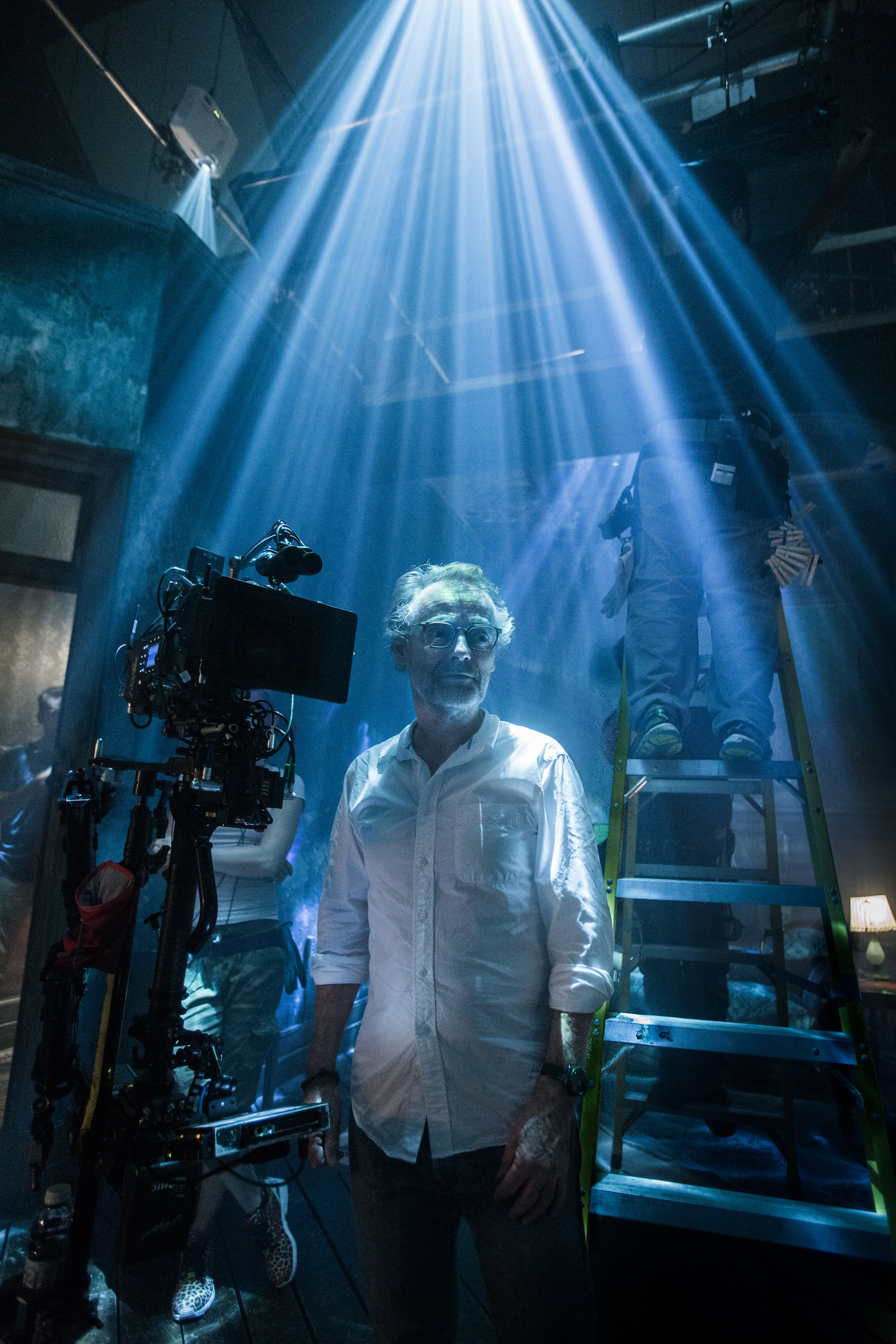Cinematographer Dan Laustsen on The Shape of Water‘s Fluid Fable
*We’re sharing some of our favorite interviews of the year this week in our ‘Best of 2017’ roundup.
Danish cinematographer Dan Laustsen worked alongside Guillermo del Toro on and off for two decades, so when it came time to shoot The Shape of Water, he shared the director’s penchant for precision. Lush, lyrical and rich in metaphor, the film pays homage to Universal Pictures’ 1940’s-era monster as it follows Sally Hawkins’ mute cleaning lady, who eventually falls in love with a creature from a South American lagoon (Doug Jones) held captive in a Cold War laboratory by a brutal bureaucrat (Michael Shannon).
“I’m not so much into monsters, but Guillermo loves them,” says Laustsen, who earlier served as del Toro’s director of photography on Mimic and his 2015 gothic thriller Crimson Peak. “I’ve never seen Creature from the Black Lagoon. It’s not like Guillermo and I sit down and watch a lot of movies together and say ‘This is the way we should do Shape of Water.’ No, we talked about how to communicate the feeling in each scene.”
Hawkins’ Elisa character doesn’t speak, and neither does the unnamed mutant freak, so their relationship is explored mainly through non-verbal means. Laustsen says, “Of course dialogue is important, but Guillermo and I were thinking very much about the old style Hollywood way of making movies. For us it was important to tell the story by painting with light and painting with the camera.”
Laustsen and his team shot with Arri Alexa cameras outfitted with an internal diffusion filter designed to soften what would otherwise be hyper-crisp imagery. “We used Zeiss Master Prime lenses, which are unforgiving,” Laustsen says. “We wanted the shots to be a little less sharp and a little bit more poetic.”
To reflect the story’s ebb and flow, Laustsen’s camera glides through the action, pushing in, pulling out, dipping down, lifting up. “Guillermo wanted the camera to feel like it’s floating in water,” Laustsen says. “Sometimes we used Steadicam, sometimes a crane, sometimes a dolly. Most of the time we put down a flat floor and had a dolly operator, a HotHead operator and a jib arm operator, all three working with Guillermo, who’d sometimes guide the camera moves. He knew exactly where the camera had to be at a certain point because Guillermo already edited the shots in his head, and knew where he was going to cut.”
Fluid tracking shots immerse the viewer in a meticulously wrought aquamarine color palette that encompasses both dry land and the sea. “Guillermo made colored concept drawings that worked as guidelines for me, the production designer, for wardrobe, for everybody. We talked about the water being green and steel blue, which is a color we found on Mimic twenty years ago and like very much. Guillermo only wanted to have red in the movie when it’s about love or death. And Eliza’s apartment is green, steel blue and teal until she’s with the monster, in the bathroom. When they’re feeling love, that’s when we change and make the light golden.”
The film plunges into a dream-like world from the very first sequence, where Hawkins seems to be floating in an aquarium-like apartment. It’s all an illusion. The scene, staged inside a Toronto soundstage, was filmed “dry for wet,” Laustsen explains. “We filled the room with a crazy amount of smoke so you couldn’t breathe, you couldn’t see anything. We push the camera through the door, look around the apartment, pan left, and then we see Sally floating. She’s on wires, and so were the couch and the chairs and the tables, all hung by wire from the ceiling in this studio filled with smoke.”
The secret weapon in pulling off the smoke-as-water switcheroo? Film projectors. “Instead of regular lights, we used film projectors fed with a little bit of light movement,: Laustsen says. “When you aim the projectors into the smoke, it looks like beams of sunshine. If we didn’t have that feeling of the light coming through water, the audience wouldn’t buy it.”

Laustsen on set in Toronto, creating the room that would appear to be under water. Courtesy Fox Searchlight.
Laustsen deployed low-angle camera placement to amplify the threatening character played by six-foot three Shannon. He also took pains to frame Hawkins in dramatic shadows. “Sally had to look like a princesses in all the shots, even when we she’s cleaning the toilet or whatever,” he says. “She looked like this fantastic princess because we kept feeding her so much lighting to get these deep shadows. We wanted her to come across as very powerful.”
Brimming with elegant visuals and poignant performances, The Shape of Water, Laustsen believes, offers moviegoers a fable about outsiders well suited to troubled times. “It’s a fairy tale and also a love story between a princess and a very strong guy who happens to be a fish,” Laustsen says. “Coming out at a time when the world is getting a little bit crazy, The Shape of Water says you don’t have to be afraid of people who are not like you. Be open minded. Don’t be afraid of strangers.”
Featured image: Dan Laustsen, Guillermo del Toro and Doug Jones on the set of The Shape of Water. Courtesy Fox Searchlight Pictures.



